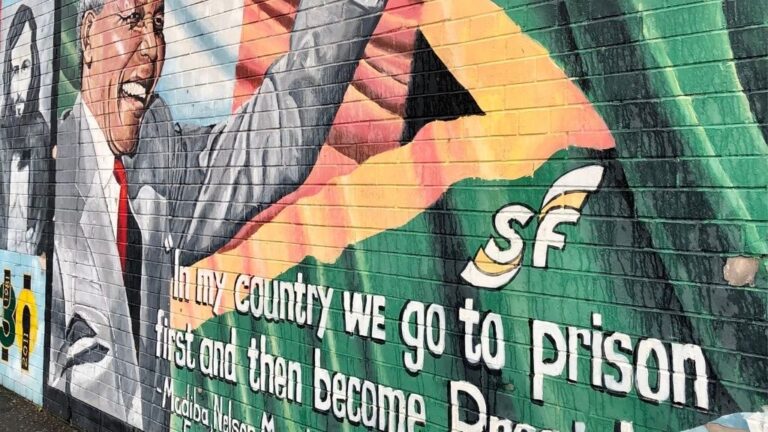The Irish Republican Army (IRA) was an active combatant in the conflict in Northern Ireland. The group is estimated to be directly responsible for around 1 deaths, of which 800 are civilians. Some see them as a brutal terrorist organization. Others believe that the IRA is a freedom fighter - whose solidarity extends across national borders to other rebels' struggle against oppression and imperialism.
The November air is crisp and cold. The drizzle makes the area around Falls Road in Northern Ireland's capital Belfast look even grayer than usual. Despite the weather, the area is lively, and the residents of the area can mingle with the tourists on the narrow sidewalk. Like us, many of them are here to take part in guided tours and learn more about Belfast's history.
Our guide walks in front of us down one of the streets where the fighting during the conflict has been the bloodiest. The conflict, often known as "The Troubles", lasted from 1969 to 1998. It was fought between Republicans who fought for a united Ireland, and loyalists who fought for Northern Ireland to remain British.
Although the peace agreement has been in place since 1998, the conflict still feels alive here, largely because of the political messages seen everywhere in the neighborhood. The guide points to the facade on the other side of the road, where painting after painting spreads out. The large, colorful murals stand in stark contrast to the gray concrete buildings around, and they tell of everything from loss and suffering, to patriotism and heroism.
The Irish image of The Troubles
- The murals represent the Irish experience of 'The troubles' and all our people have been involved, says our guide.
During the 70s and 80s, the guide himself was an active combat member of the IRA. Today, he is instead working to educate about the conflict and what the Republican, pro-Irish residents of Belfast were exposed to. He does this, among other things, through guided tours such as the one we have been allowed to follow today.
Many of the images in front of us represent exactly what he is talking about - the suffering, discrimination and oppression that the Catholic population in Northern Ireland has endured. They also show IRAs from a different point of view than we are used to, as heroes instead of insurgents.
- The IRA never saw itself as terrorists, says our guide. He continues:
- We saw ourselves as freedom fighters who wanted to free the Irish people from British oppression. That is why we have always sympathized with other freedom fighters around the world. We often saw their struggle as our own.

It is difficult not to get carried away by the depiction that unfolds before our eyes about freedom, brotherhood and solidarity. Along the promenade, Nelson Mandela, Martin Luther King and IRA member Bobby Sands adorn the city's facades side by side. Paintings that demand justice for the Palestinian people, demands for an end to the embargo on Cuba and older paintings that protest against South Africa's apartheid system create an intertwined message of a global fight against oppression.
It is easy to understand why this identification has become so strong in Northern Ireland. Like the Palestinian resistance movement, many Republicans in Northern Ireland feel that they have been occupied by Britain. Like the black population under South Africa's apartheid regime, there has been systematic repression based on nationality and religion.
Terror or freedom struggle?
The depictions on the facades of western Belfast are in stark contrast to everything I learned about the IRA before I came here. In the British and international media, the IRA is rarely described as anything other than a rebel group responsible for terrorist acts, murder, crime and warfare. If any global links are mentioned, they are mainly about the arms trade.
And that writing of history is obviously not wrong. The IRA has extinguished more than 1 lives during the three decades of conflict in Northern Ireland. They were notorious for their brutal bombings and the criminal activity that terrorized loyalist as well as Republican areas. Internationally, they had strong ties to dictatorships such as Gaddafi's Libya, with whom they exchanged weapons and military training.
But our guide's story and the colorful facades around Falls Road show that here the IRA is remembered for more than brutality and terror.
The tour of western Belfast is beginning to come to an end, and we stand silent for a moment and admire the paintings in front of us. Northern Ireland's history of civil war is far from unique - national conflicts with active rebel groups are a global problem. And just like the IRA, these rebels probably have a completely different picture of their struggle than the incumbent government's declarations. Few rebel groups probably see themselves as instigators and criminals, but they experience themselves as freedom fighters.
The global solidarity that adorns the walls of Belfast shows that the same kind of experiences of imperialism, oppression and injustice are present all over the world. Without listening to the perspective of the rebel groups, can the cycles of violence that a civil war entails ever be broken?
The tour is over, and while we start looking for the bus that will take us home again, the guide slowly walks back to Davis Tower where it all began. Maybe to meet a new group of curious tourists, and once again tell the story of the IRA's struggle, brotherhood and global solidarity.


